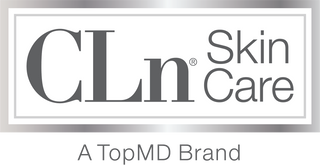
Let's face it—acne is frustrating! But understanding the type you’re dealing with can be a game-changer in how you tackle those annoying breakouts. Acne comes in two main types that might look similar but are actually worlds apart: fungal acne and bacterial acne. Knowing which one you're dealing with can help you choose the right treatment and get clearer skin faster.
What is Fungal Acne?
First up, fungal acne, which isn't technically acne at all. The correct term is malassezia folliculitis, and it's all about yeast. This yeast, known as Malassezia, normally chills harmlessly on your skin, but sometimes it gets a bit too comfy and multiplies in your hair follicles. This overgrowth is what causes those pimple-like bumps.
Fungal acne loves sweaty, moist conditions. So, if you’re hitting the gym often or live somewhere hot and humid, you might be more prone to it. Also, things like wearing tight, non-breathable clothes can trap moisture and heat, making a perfect home for this yeast to thrive.
The bumps from fungal acne are usually pretty uniform in size, red or skin-colored, and can appear in clusters that look like a rash. They’re most common on the chest, back, and shoulders—places where you might sweat more.
Understanding Bacterial Acne
Now, let’s talk about the more well-known villain: bacterial acne, or acne vulgaris. Dr. Paul Jarrod Frank explains that this type is caused by a bacteria named Cutibacterium acnes (also known as Propionibacterium acnes). Unlike its fungal cousin, bacterial acne loves oil, not moisture. It thrives in oily areas of your skin and causes those classic acne symptoms like blackheads, whiteheads, and even those deep, painful cysts.
Bacterial acne is influenced by hormonal fluctuations which can increase oil production in your pores. It’s super common during puberty, but many adults deal with it too!
How to Distinguish and Treat Them
It can be tricky to tell the difference between fungal and bacterial acne by just looking, but here’s a tip: fungal acne is itchy and uniform, while bacterial acne varies more in size and appearance and is usually not itchy.
As for treatment, keeping your skin clean and dry helps manage fungal acne. Loose clothing and medicated shampoos or creams can be real lifesavers. Bacterial acne, on the other hand, might need a good salicylic acid cleanser or sometimes, treatments like benzoyl peroxide or retinoids, depending on how severe it is.
Why CLn Skincare Could Be Your Acne Solution
Struggling with acne can be a frustrating experience, whether it's the common bacterial type that shows up as varied blemishes, or the pesky fungal acne that presents as uniform itchy bumps. The good news is CLn has products designed to tackle these annoying issues head-on: the CLn Acne Cleanser and the CLn Facial Moisturizer.
A Dual-Action Powerhouse for Cleansing
The CLn Acne Cleanser is not just another face wash. It’s a first-of-its-kind acne fighter that combines the bacteria-battling power of sodium hypochlorite with the pore-penetrating prowess of 0.5% salicylic acid. What does this mean for your skin? It means you get a robust cleansing action that tackles the root causes of both bacterial and fungal acne.
For those dealing with bacterial acne, this cleanser cleans deep into clogged pores to remove the buildup of oil and dead skin cells, effectively reducing the presence of acne-causing bacteria. The addition of salicylic acid gently exfoliates the skin, helping to prevent new blemishes from forming.
Fungal acne sufferers will find relief in the unique formulation as well. The cleanser’s ingredients work to strip away the excess yeast and oil that contribute to fungal outbreaks, all without the harsh drying effects that can come from typical antifungal treatments. Plus, it’s safe for daily use and won’t bleach your clothes or towels—a common annoyance with other potent acne treatments.
Hydration Without Complication
After cleansing, your skin deserves a dose of hydration that doesn’t compromise its clarity. The CLn Facial Moisturizer is engineered to lock in moisture while soothing sensitive or inflamed skin, thanks to its niacinamide and ceramide complex. These ingredients not only moisturize but also strengthen your skin’s natural barrier and reduce inflammation.
This moisturizer is lightweight, non-greasy, and absorbs quickly, making it ideal for all skin types. It’s especially beneficial for those using acne treatments, helping to maintain a balanced and healthy complexion.
Give CLn Skincare a Try
If you’re tired of acne treatments that irritate your skin or just don’t work, CLn’s offerings might just be what you need. Both the cleanser and the moisturizer are free from harsh chemicals, fragrances, and parabens, focusing on what your skin really needs to heal and thrive.
Ready to take control of your skin health? Head over to CLn Skincare’s website to explore their range of products designed with your skin in mind. Whether it's stubborn bacterial acne or tricky fungal acne, give your skin the care it deserves and step out with confidence!
